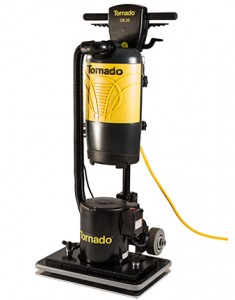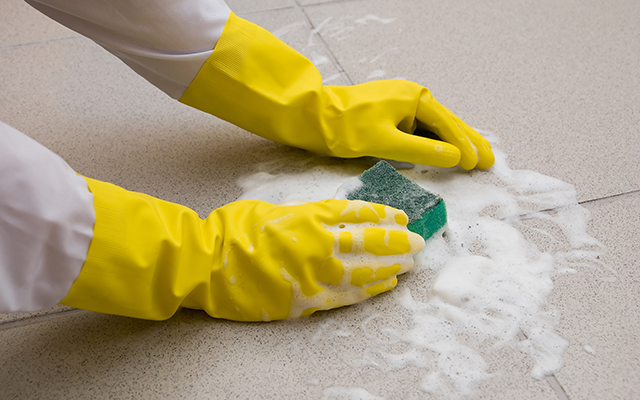Chemical-Free Cleaning: What You Need to Know
Green cleaning is constantly evolving. A few years ago, the push was toward more natural cleaning products that use “friendlier” chemicals. More recently, the focus is shifting toward chemical-free cleaning. But is it really possible to achieve the results you want without using chemicals?
Some experts argue that the phrase “chemical-free” is misleading. Strictly speaking, everything is a chemical, including plain-old water. Some of the newest and most effective chemical-free technologies work by altering the chemistry of water and air to make them more effective for cleaning and disinfecting. In general, however, we can understand chemical-free cleaning to mean any method that replaces traditional chemical-based solutions with a lower-impact alternative.
The Case for Chemical-Free Cleaning
We’ve come a long way since the days when elbow grease was the only available cleaning solution. Detergents, soaps, solvents, disinfectants, and other chemical-based cleaners have become an invaluable part of any cleaning and maintenance arsenal. Loosening dirt, removing stains, annihilating germs—there’s a product for every task on our list.
Why would we want to back away from all of this apparent progress? Advocates of chemical-free cleaning suggest these important reasons:
- Reduced environmental impact. It’s estimated that the industrial cleaning sector uses 5 to 6 billion pounds of cleaning chemicals each year. These products don’t disappear after use, and there’s concern about their impact on the environment, especially precious and vulnerable waterways. Using fewer cleaning chemicals is an important step in becoming a greener industry.
- Safety. Many cleaning chemicals can post hazards to the skin and airways of workers and building occupants. In schools or hospitals with sensitive occupants, avoiding chemical irritants is even more important. The CDC recently released a report of the chemicals most often associated with injury, and four of the top five are among chemicals or elements of formulas found in cleaning products—ammonia, chlorine, hydrochloric acid, and sulfuric acid. Less chemicals means less potential for accidents.
- Training. A large amount of time, energy, and resources must go into training workers on how to safely handle, mix, dilute, and store chemicals safely. The chemical-free solutions on the market tend to be much less complicated and much less dangerous, helping reduce costly training.
- Simplified logistics. It’s not just training that get easier when you cut out chemicals. So much goes into sourcing, purchasing, transporting, and storing those products that switching to a chemical-free system can revolutionize how you spend your resources.
- Extended life for surfaces and equipment. Over time, almost all chemically based cleaners can have a negative effect. Slight traces of chemical residue can eat away at finishes and attract more dirt. Gentler chemical-free methods can help your equipment and surfaces last longer.
- Cost savings. While some chemical-free cleaning systems may require a significant upfront investment, the money saved not buying chemicals (typically an expense of thousands of dollars a year for a large building or institution) means that the equipment should quickly pay for itself.
Reasons to Skip Chemical-Free Cleaning
So far, cleaning without chemicals sounds like a huge win. So why isn’t everyone jumping on the chemical-free bandwagon? There’s always a tradeoff, and every facility manager has to weigh the costs and benefits for themselves. Here are a few common objections:
- Resistance to change. Changing mindsets doesn’t happen overnight, and people are suspicious of novelty. “If it ain’t broke, don’t fix it” is a common refrain in the industry, and years of habit and tradition are not easy to dismantle. While chemical-free cleaning technology has made tremendous leaps in recent years, it’s still considered new and its reputation is not well established.
- Difficulty proving effectiveness. It can be an uphill battle to convince management or clients of the benefits, and they may question whether chemical-free methods really are on par with conventional industrial cleaning products. It’s not easy to verify the claims about the power or effectiveness of these technologies, and not all units or methods meet the stringent standards of EPA, FDA and USDA regulations when it comes to disinfecting.
- Not ideal for all areas. While chemical-free cleaning may be a natural fit for some aspects of a building (windows and floors, for example) it isn’t a one-size-fits-all solution. High-risk areas, such as bathrooms and kitchens, may still require the use of chemicals to reach the expected level of degreasing or disinfection. Places such as pools, showers, and tubs that are constantly wet may also require specialized chemicals to control bacteria, mold, and algae.
- Cost. As mentioned, many of the current chemical-free technologies come at a steep initial price. Working that investment into the maintenance budget is often a huge ask, especially for new technology considered a risk by traditionalists.
- Water usage. Chemical-free cleaning may be greener in many ways, including saving water and other resources. That isn’t the case with all chemical-free methods, however, with many relying on the use of large amounts of water. The sustainability of those methods becomes a tradeoff of chemical reduction vs. water consumption and in general have not been comprehensively addressed. In areas prone to drought or with high-water charges, this aspect may actually be prohibitive.
Chemical-Free Cleaning: Techniques and Technologies to Consider
You know the basic pros and cons of chemical-free cleaning, but what are the available methods and how do they work? Here’s a down-and-dirty guide to get you started.
Steam
Steam cleaners were one of the earliest chemical-free cleaning technologies. Steam loosens dirt, can permeate hard-to-reach areas, and at high temperatures is an effective way to kill germs.
Pressure washing
Another classic chemical-free cleaning method, pressure washing uses high-pressure water streams to blast away dirt and grime.
Dry ice blasting
A close relative of the pressure washer, these systems blast tiny pellets of solid carbon dioxide at a surface. The pellets mechanically scrub away dirt and mold; the freezing temperature causes contaminants to shrink, lose adhesion, and fall away from the surface, while the resulting carbon dioxide gas “bounces” back off the surface, pushing away the dirt even faster. This can be a loud process, so protective ear equipment must be worn when using most blasting systems and the noise may disturb people nearby.
Dry steam
These units, which are gaining popularity in food-service establishments, produce a jet of superheated vaporized steam that evaporates on contact, leaving very little wastewater behind.
Engineered water
There’s a wide range of engineered-water systems on the market, from wall-mounted chemical generation using ozone, to small handheld units. The most common form is electrolyzed or oxidized water. Sometimes referred to as “blue cleaning,” these technologies electrically activate water to act like a detergent. Chemical detergents work by making water “more wet,” lowering its surface tension so that it can contact and bond with dirt particles. With electrically activated water, the effect is the same. The only difference is that the change happens electrically instead of chemically. The system infuses tap water with oxygen, and then applies an electric current. This creates a mix of very mildly acidic and alkaline water, and “breaks down” the water molecules into charged ions and nano-sized gaseous bubbles that stick to dirt and germs, so the activated water lifts contaminants away from surfaces.
Microfiber cloths and mops
The simplicity of antibacterial microfiber makes it hard to believe how effective it is as a mechanical cleaning method. The tiny, closely packed plastic fibers of the cloth work by sweeping up and holding even microscopic particles. The smaller the fibers, the more powerful the cleaning action. The very best cloths have fibers that are only 3 to 5 microns across, which is about the same size as an average bacterium. When used with engineered water, their effectiveness is enhanced.
No-touch spray, scrub, and vacuum
Though traditionally these units are used with chemicals, with engineered water they can be used as a simple chemical-free solutions for floors and other surfaces.
Orbital Floor Machines and Scrubbers
These machines use mechanical action versus chemicals to clean and can be incredibly effective in reducing or eliminating what has traditionally been some of the most caustic cleaning chemicals, floor finish strippers. Traditionally, facility managers have stripped their floors every six months to a year. Orbital floor machines can remove top coats of floor finish, where most of the scratches and damage reside, without the use of any strippers or harsh chemicals. The floor can then be top coated with finish, restoring it in a much more environmentally sensitive manner, while also saving significant man hours.
 Increase Profits & Productivity with Your Equipment
Increase Profits & Productivity with Your Equipment
Tornado Industries does more then sell equipment. We help solve facility cleaning challenges. Let’s talk about your cleaning challenges in person.

